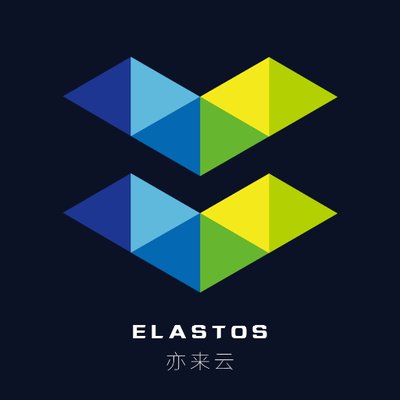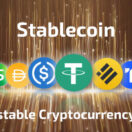Elastos is a blockchain project that wants to create a new internet where users have complete control over their digital assets. There is a seemingly infinite supply of digital movies, books, games and music on the internet, but people don’t necessarily own them. Elastos wants to make digital assets identifiable and tradable by building a new World Wide Web that respects property rights.
The project is the brainchild of Chen Rong, a former Microsoft software engineer. Chen wanted to create a platform in which applications and services can’t directly access the Internet, effectively preventing malware attacks.
The project didn’t really take shape until June 2017, when Jihan Wu, CEO of Bitmain, became an angel investor. That led to the development of an open source, lightweight operating system for virtual machines called Elastos. Blockchain technology was then integrated into the design, creating the Elastos Smart Web.
In addition to building a new internet that respects property rights, Elastos aims to provide a platform for decentralized applications (dApps) that users can access on their smartphones without having to change their operating system. This “smart web of applications” will function as a special economic zone where its native token (ELA) is the base currency.
How Elastos Works
Elastos is implementing a main chain and sidechain design to address the lack of computation speed or flexibility in blockchains made for consensus-base record keeping. The main chain will only process transactions, while the sidechain executes smart contracts for dApps and services.
Current blockchains aren’t designed to store data and they don’t have enough space to store a large volume of digital books and movies. To deal with this problem, Elastos runs applications on a runtime environment called Elastos Runtime instead of the blockchain.
This method is more secure because all network data must be sent through a trusted channel with a verifiable blockchain ID. The blockchain’s credibility is transferred to Elastos Runtime. Runtime can take on the form of an SDK, a virtual machine, or an independent OS that works on top of other operating systems.
As a blockchain-based internet, Elastos has the following advantages:
– By using predefined side chains to execute smart contracts, the Elastos public chain remains clean and simple, and hidden from third-party dApps and services. This also protects the main chain from overload.
– Elastos smart contracts and dApps run on the Smart Web. This creates a closed platform that can function as a special economic zone where users can securely trade digital assets.
The separation of dApps from the network provides security and ensures that digital content won’t be leaked.
– Elastos Runtime runs on top of the operating system of a user’s mobile device. The system supports traditional programming languages, making it relatively easy to write code. It also supports popular programming frameworks.
– Even when Elastos dApps are running on operating systems such as Android, iOS, and Windows, the local OS won’t be able to sabotage the property rights of digital assets.
Elastos Smart Web
Elastos wants to create a smart web in which digital assets can securely be traded. The Elastos Smart Web is a composed of five pillars:
1. Elastos Blockchain: a decentralized blockchain where every device, website, individual, and digital asset has a unique ID. This will enable Elastos to establish trust on the Internet.
2. Elastos OS: a general purpose operating system designed to address the needs of the Internet of Things (IoT). It prohibits dApps and services from directly accessing the Internet and provides an improved decentralized support system for applications. The system will use Java, C/C++, and HTML5/JS as the primary modes of development.
3. Elastos Runtime: a lightweight runtime environment that allows users running other operating systems (Android, Windows, etc.) to access dApps and services on the Elastos Smart Web outside of the Elastos OS.
4. Elastos Carrier: a decentralized peer-to-peer internet service provided by the Elastos ecosystem. Its nodes may be executed within environments connected to the internet, such as local area networks at home or workplace.
5. Elastos Software Development Kit: an SDK that connects apps to the Smart Web. Apps must use the SDK to access their IDs on the Smart Web.
Elastos vs. The Traditional Internet
Blockchain technology allows for the recording of property rights, but while users can prove their ownership, they can’t prevent people from stealing or reading these books without permission. It’s difficult to monetize content in such an environment.
Elastos wants to create an environment in which the viewing, buying or selling of a digital asset takes place on the Smart Web and abides by the rules of smart contracts.
For example, an author can use Elastos to determine the number of digital books they want in circulation. They can decide they only want to have 10,000 copies of their book circulating on the Smart Web, enabling them to create scarcity and increase demand. After reading the book, a customer can choose to sell it to someone else at a higher price.
In other examples, a game developer could use the platform to sell limited-edition game apps, or a filmmaker could crowdfund a film and distribute it exclusively to contributors. Elastos creates financial opportunities for both creators and consumers, which is a stark contrast to the current internet where digital assets are pirated with impunity.
Elastos Token (ELA)
Elastos token (ELA) is the native token of the Elastos blockchain. It can be used for trading, paying blockchain processing fees, investing in digital assets, and more. ELA is the basic unit and Satoshi ELA (Sela) is its minimum currency unit. 1 ELA is equivalent to 108 Sela.
Elastos is merged mined with Bitcoin. Bitcoin acts as a parent chain and Elastos is its auxiliary chain. Miners will submit proof-of-work problems to both blockchains at the same time without using additional computing power. This mechanism gives Elastos plenty of hashing power, making it less susceptible to a 51% attack.
ELA will be produced every two minutes through Bitcoin merged mining. The newly minted coins will be allocated to miners and the Elastos Foundation. Miners take 70% and the Elastos Foundation takes the remaining 30%.
ELA Trading Volume, Pricing, and Market Cap
The total supply of ELA caps at 33 million tokens. ELA is distributed as follows:
– *50% (16.5 million) is set aside for ecosystem development and includes mining rewards.
– 15% (5 million) is set aside for angel investors, Elastos founders and key partners.
– 24% (8 million) is set aside in private equity and will be used to support the development of the Elastos platform.
– 11% (3.5 million) is set aside for the Elastos Foundation and will be used to fund operation costs and further invest in the Elastos ecosystem.
*A portion was airdropped to BTC holders to drum up interest in the project, and another portion was distributed to authorized cryptocurrency exchanges for the ICO.
To compensate for the natural loss of tokens (when users lose wallets, etc.) and to slightly inflate ELA’s value, the amount of tokens in circulation will be increased at a fixed rate of 4% per annum.
ELA was first listed at ~$44 USD after its ICO ended in January 2018. Its price quickly rose and reached an all-time high of $91.56 in February 2018 before it started to decline. Its market cap was first listed in April 2018 at ~$148 million USD when the price was ~$28 USD. The project appears to be experiencing the typical price volatility of a young crypto project.
Buying, Storing and Selling ELA
At this time, ELA can only be acquired from Huobi, CoinEgg, and BCEX. For storage, the Elastos team has released their own web wallet for ELA.
Liquidity of ELA
Elastos has good market liquidity on the few exchanges that carry it. The project makes a strong case for scarcity in a digital economy. Its scope is ambitious and it’ll be some time before its goals come to fruition, but there’s no denying the need for a new, decentralized internet where users have complete control over their digital assets. It’s a project worth keeping an eye on.






